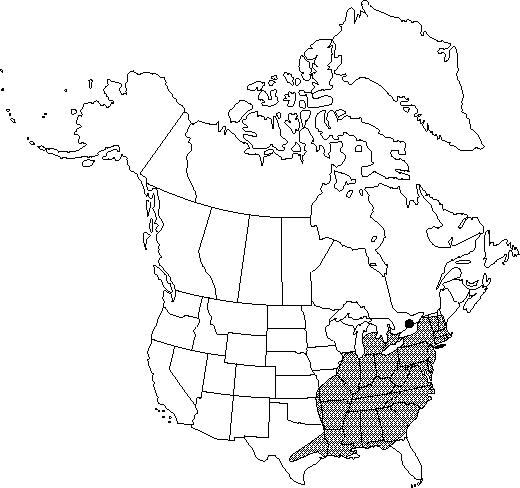Lindera benzoin
Mus. Bot. 1: 324. 1851.
Shrubs or small trees, to 5 m. Young twigs glabrous or sparsely pubescent. Leaves horizontal to ascending, strongly aromatic (spicy) throughout growing season; petiole ca. 10 mm, glabrous or pubescent. Leaf blade obovate, smaller blades generally elliptic, (4-)6-15 × 2-6 cm, membranous, base cuneate, margins ciliate, apex rounded to acuminate on larger leaves; surfaces abaxially glabrous to densely pubescent, adaxially glabrous except for a few hairs along midrib. Drupe oblong, ca. 10 mm; fruiting pedicels of previous season not persistent on stem, slender, 3-5 mm, apex not conspicuously enlarged. 2n = 24.
Phenology: Flowering spring.
Habitat: Stream banks, low woods, margins of wetlands, uplands, especially with exposed limestone
Elevation: 0-1200 m
Distribution

Ont., Ala., Ark., Conn., Del., D.C., Fla., Ga., Ill., Ind., Kans., Ky., La., Maine, Md., Mass., Mich., Miss., Mo., N.H., N.J., N.Y., N.C., Ohio, Okla., Pa., R.I., S.C., Tenn., Tex., Vt., Va., W.Va.
Discussion
The flowers of Lindera benzoin have an unusually sweet fragrance.
Among the Cherokee, Creek, Iroquois, and Rappahannock tribes, Lindera benzoin was used for various medicinal purposes (D. E. Moerman 1986).
Selected References
None.